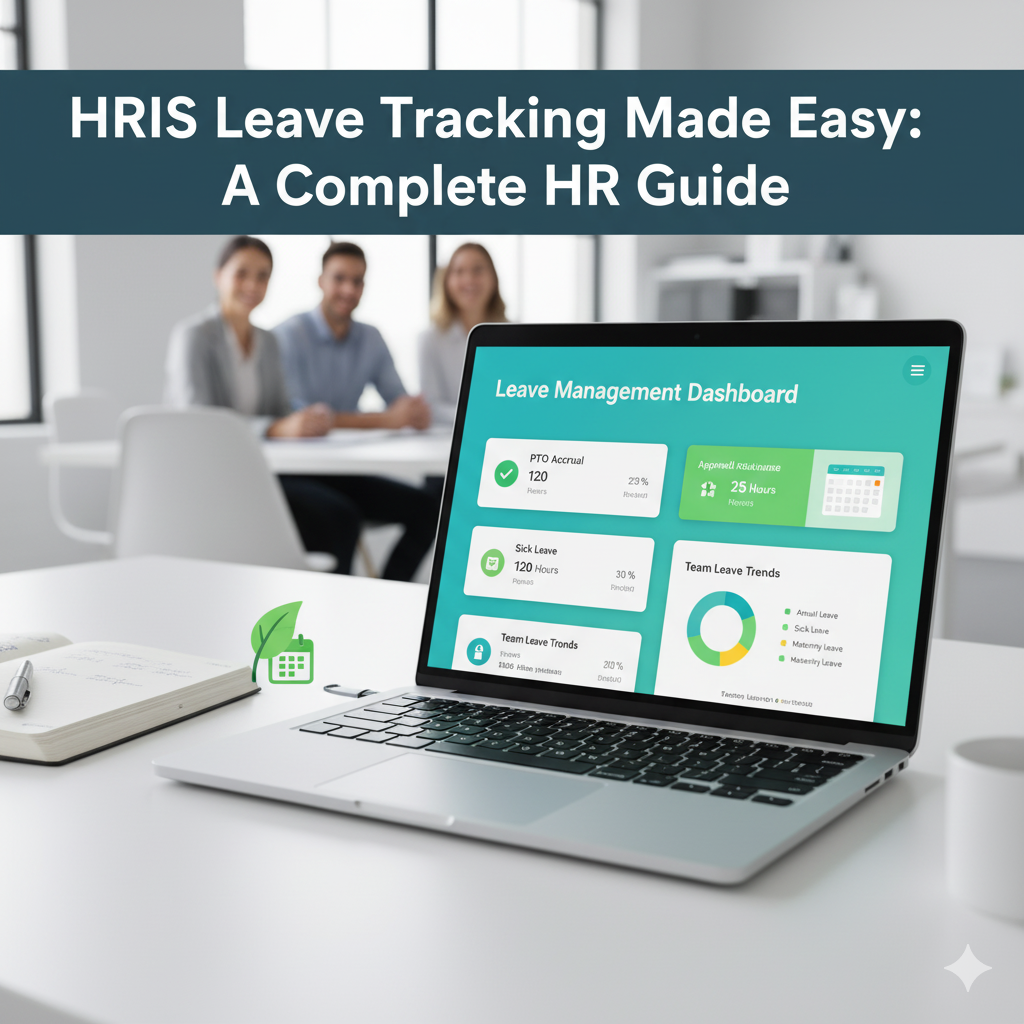Managing employee leave is one of HR’s most essential yet challenging responsibilities. Between tracking vacation days, sick leave, and other entitlements, it’s easy for errors to creep in — especially with manual processes.
That’s where HRIS leave tracking comes in. With a powerful Human Resource Information System (HRIS), businesses can automate leave management, maintain compliance, and ensure fairness and accuracy across the organization.
In this guide, you’ll learn how HRIS simplifies leave tracking, the benefits it offers, and best practices for maximizing its impact.
What Is HRIS Leave Tracking?
HRIS leave tracking is the digital management of employee leave and absences through an integrated HR system. It replaces manual spreadsheets and paper forms with automated processes, ensuring real-time visibility and accuracy.
A robust HRIS tracks:
- Employee leave requests and approvals
- Accrued and used leave balances
- Different leave types (sick, vacation, maternity, etc.)
- Integration with payroll and attendance data
With HRIS leave tracking, HR teams can easily monitor who’s out, when, and why — all from one central dashboard.
Why HRIS Leave Tracking Matters
Implementing HRIS leave tracking benefits your organization in multiple ways:
- Improves Accuracy
Manual tracking often leads to miscalculations in leave balances and payroll. HRIS automates these updates, ensuring every leave entry is accurate and consistent. - Saves Time and Reduces Workload
By eliminating repetitive administrative tasks, HR teams can focus more on strategy and employee engagement. - Ensures Legal Compliance
HRIS systems help maintain compliance with labor laws, such as proper leave accruals and mandatory rest days. - Enhances Employee Experience
Employees can request time off, view balances, and receive approvals quickly through a self-service portal — no more waiting for email replies. - Improves Workforce Planning
Managers get real-time insights into staff availability, helping avoid scheduling conflicts and ensuring sufficient coverage.
Key Features of an Effective HRIS Leave Tracking System
A modern HRIS offers a range of features to simplify leave management:
| Feature | Description |
| Automated Leave Accruals | Calculates earned leave based on policy and attendance |
| Customizable Leave Policies | Supports company-specific leave types and rules |
| Real-Time Leave Balances | Displays accurate, updated leave credits |
| Approval Workflows | Allows supervisors to review and approve requests online |
| Integration with Payroll | Ensures accurate pay computation based on leave records |
| Analytics and Reports | Provides insights into leave usage and trends |
Common Leave Types Managed by HRIS
A comprehensive HRIS can track multiple leave categories, including:
🏖 Vacation Leave
🤒 Sick Leave
👶 Maternity/Paternity Leave
⚖️ Emergency Leave
❤️ Bereavement Leave
🕐 Unpaid Leave
Each leave type can be customized based on company policy, ensuring flexibility and compliance.
How HRIS Leave Tracking Works
- Employee submits a leave request via the HRIS self-service portal.
- Manager reviews and approves the request online.
- System automatically updates the employee’s leave balance.
- Payroll module syncs data for accurate salary calculation.
- Reports and analytics generate insights into leave usage and patterns.
This automated workflow saves time, prevents disputes, and creates a transparent process for everyone involved.
Benefits for HR Teams and Employees
| For HR Teams | For Employees |
| Automated tracking & reduced paperwork | Easy online leave requests |
| Better compliance & reporting | Real-time balance visibility |
| Seamless payroll integration | Faster approval process |
| Fewer disputes or errors | Clear and transparent system |
Best Practices for Effective HRIS Leave Management
To make the most of your HRIS leave tracking system, follow these proven strategies:
✅ Customize policies – Tailor your HRIS to match company-specific leave rules.
✅ Train your employees – Provide short tutorials on using the system.
✅ Integrate with payroll & attendance – Ensure data consistency.
✅ Review reports regularly – Identify patterns of absenteeism or burnout early.
✅ Maintain transparency – Keep employees informed about their balances and policies.
Challenges and How to Overcome Them
| Challenge | Solution |
| Employees resist new systems | Provide training and highlight benefits |
| Data inconsistencies | Sync HRIS with other HR tools regularly |
| Complex policy setup | Work with HRIS vendors to customize features |
| Limited access | Choose a cloud-based platform with mobile support |
The Future of HRIS Leave Tracking
The next generation of HRIS systems is smarter and more predictive. With AI and analytics, future HR platforms will automatically forecast leave trends, identify potential understaffing risks, and even suggest optimal scheduling solutions.
These innovations are helping HR evolve from administrative work to strategic workforce management — powered by accurate data and automation.
Conclusion
HRIS leave tracking isn’t just about monitoring absences — it’s about empowering HR teams with the tools they need to operate efficiently, transparently, and strategically.
By automating leave management, you reduce errors, boost employee satisfaction, and make data-driven HR decisions. Whether your business is small or enterprise-level, an HRIS solution is the smartest way to simplify leave tracking and compliance in 2025.
👉 Upgrade your HR process today — make leave tracking effortless with HRIS.

